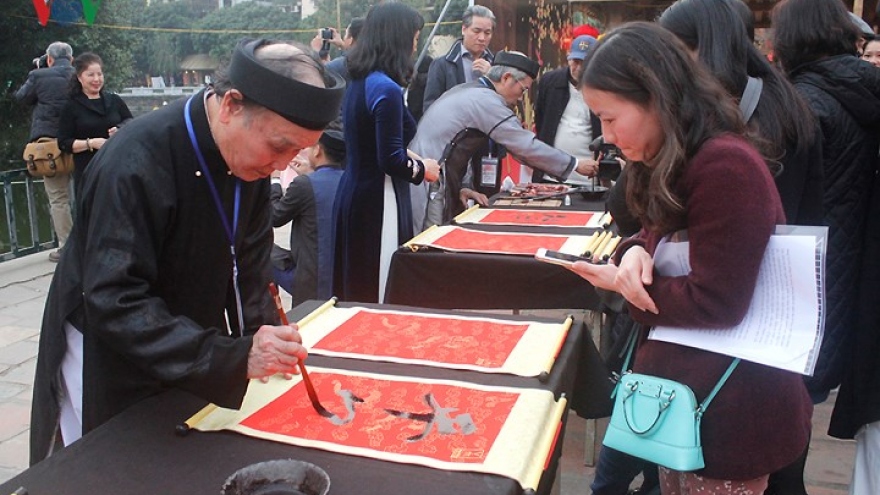Cau Nhi temple worships little dog
VOV.VN - Cau Nhi temple, on an island at the north end of Truc Bach lake in Hanoi, is associated with the legend of King Ly Cong Uan who moved Vietnam’s capital to Thang Long, the former name of Hanoi, more than a thousand years ago. This spring, the temple has been restored attracting crowds of visitors.
 |
Legend says that a dog was born in Dinh Bang village, Bac Ninh province, with some patches on his hair looking like the letters “God’s Son’. This apparently forecast that King Ly Cong Uan would rise to the throne because the King was born in the year of the dog.
 |
 |
Legend has it that the King considered his dream about the Mother Dog and puppy as signals of good luck. So he decided to build a temple and worship the dogs as genies. Translating the King’s dream, the locals placed a stone dog in the temple.
 |
Over the centuries, the little temple was eventually forgotten and the belief of worshipping the Dog also faded away. The locals restored the temple to worship the Fish and Water genies. That’s why Cau Nhi temple is also called Thuy Trung Tien or Water Fairy.
 |
Bui Hong Son, a resident in Tran Vu street, Hanoi, said, “Cau Nhi temple was built in the Ly dynasty. It is said that after moving the capital to Thang Long, the King traveled around Truc Bach lake where he had a dream about a white dog and decided to build the temple. On the occasion of 1000th anniversary of Thang Long-Hanoi in 2010, the temple was restored. Because the belief of worshiping the dog has been faded out, the temple now worships the Water Fairy.”
 |
Mr. Son said that he had visited the temple a few times. Previously, he went there by boat. The temple was in the rectangular shape with a curved roof and decorated with parallel sentences. On the altar, there was a lamp, an urn, flower and incense vases, and a few small statues. Outside the temple was a bamboo blind with patterns of dragons, lakes, cloud, and water. There was also a stele featuring the name of the temple.
According to Mr. Son, the temple is most crowded during the early days of the lunar New Year because, according to folk tradition, the dog represents good luck and happiness.
Following a major restoration, a stone bridge was built connecting the temple with the mainland. In the temple, there are a number of bronze statues and objects cast by artisans of Ngu Xa bronze casting village nearby.


